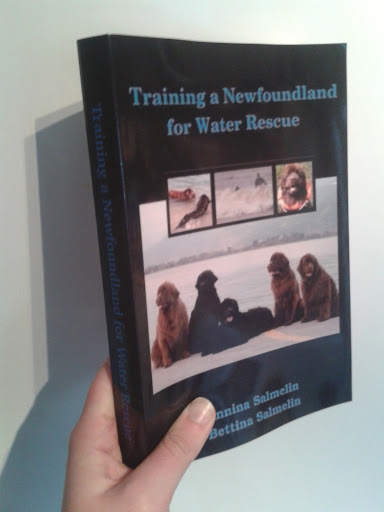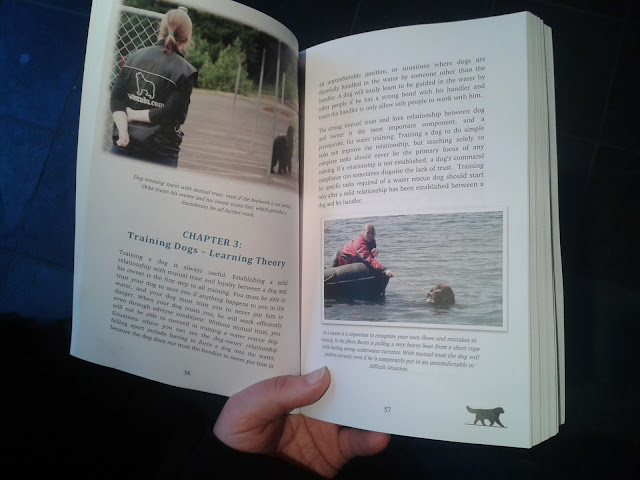Capri
New member
Training a Newfoundland for water rescue - book will be published in December 2012. It is in FULL colour, with +/- 400 pages of information.

"Training a Newfoundland for Water Rescue” covers subject areas directly related to training dogs on land and in water. It includes many helpful hints, trainings tips and exercise variation ideas to help you reach your goal in training: whether it is for fun, tests or real water rescue work. The training methods rely on forming a relationship with your dog of mutual trust, which is created using positive reinforcement and pack drive.
The book covers subject areas such as what to look for in a good water dog, what breeders can do to improve the working temperaments of the dogs they breed, how to start water training and possible health issues associated with water rescue dogs. Included are also examples of how clicker training can be used to reward dogs, how to use pack and prey drives to create highly motivated dogs, and further information on dog language and learning theory.
The training section includes explanations and examples on training contact, control and how to train all the useful commands for water dogs, planning a successful training session, breaking exercises into smaller components, creating new exercises for variation and examples of exercises that can be trained alone.
A glimpse is also provided into the world of real water rescue dogs; what you and your dog are capable of achieving if you decide to take that extra step in training and continue towards that ultimate goal of every true water rescue enthusiast.
More information about the authors, table of contents and order information:
http://www.watercubs.com/en_news_book.htm
"Training a Newfoundland for Water Rescue” covers subject areas directly related to training dogs on land and in water. It includes many helpful hints, trainings tips and exercise variation ideas to help you reach your goal in training: whether it is for fun, tests or real water rescue work. The training methods rely on forming a relationship with your dog of mutual trust, which is created using positive reinforcement and pack drive.
The book covers subject areas such as what to look for in a good water dog, what breeders can do to improve the working temperaments of the dogs they breed, how to start water training and possible health issues associated with water rescue dogs. Included are also examples of how clicker training can be used to reward dogs, how to use pack and prey drives to create highly motivated dogs, and further information on dog language and learning theory.
The training section includes explanations and examples on training contact, control and how to train all the useful commands for water dogs, planning a successful training session, breaking exercises into smaller components, creating new exercises for variation and examples of exercises that can be trained alone.
A glimpse is also provided into the world of real water rescue dogs; what you and your dog are capable of achieving if you decide to take that extra step in training and continue towards that ultimate goal of every true water rescue enthusiast.
More information about the authors, table of contents and order information:
http://www.watercubs.com/en_news_book.htm



